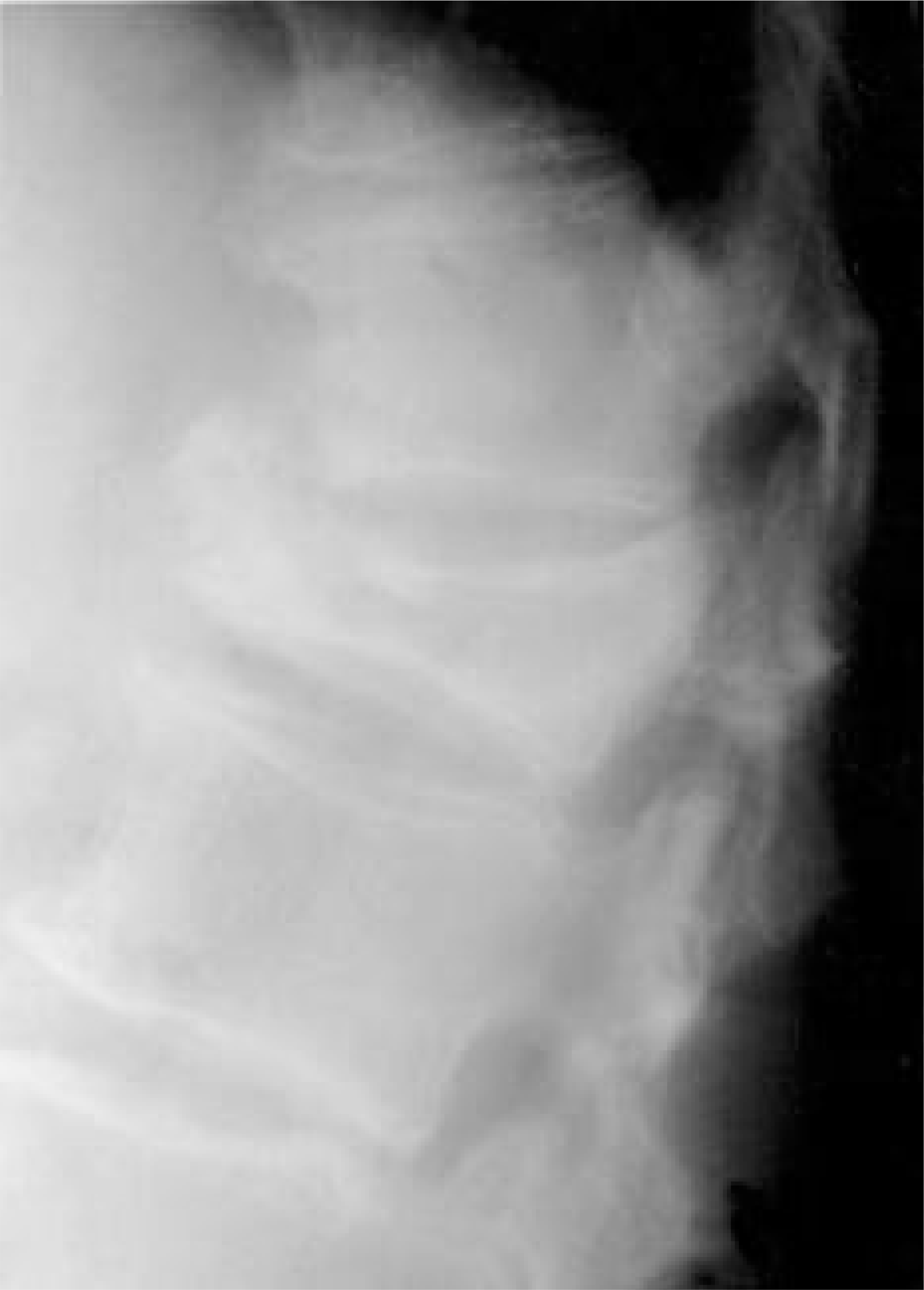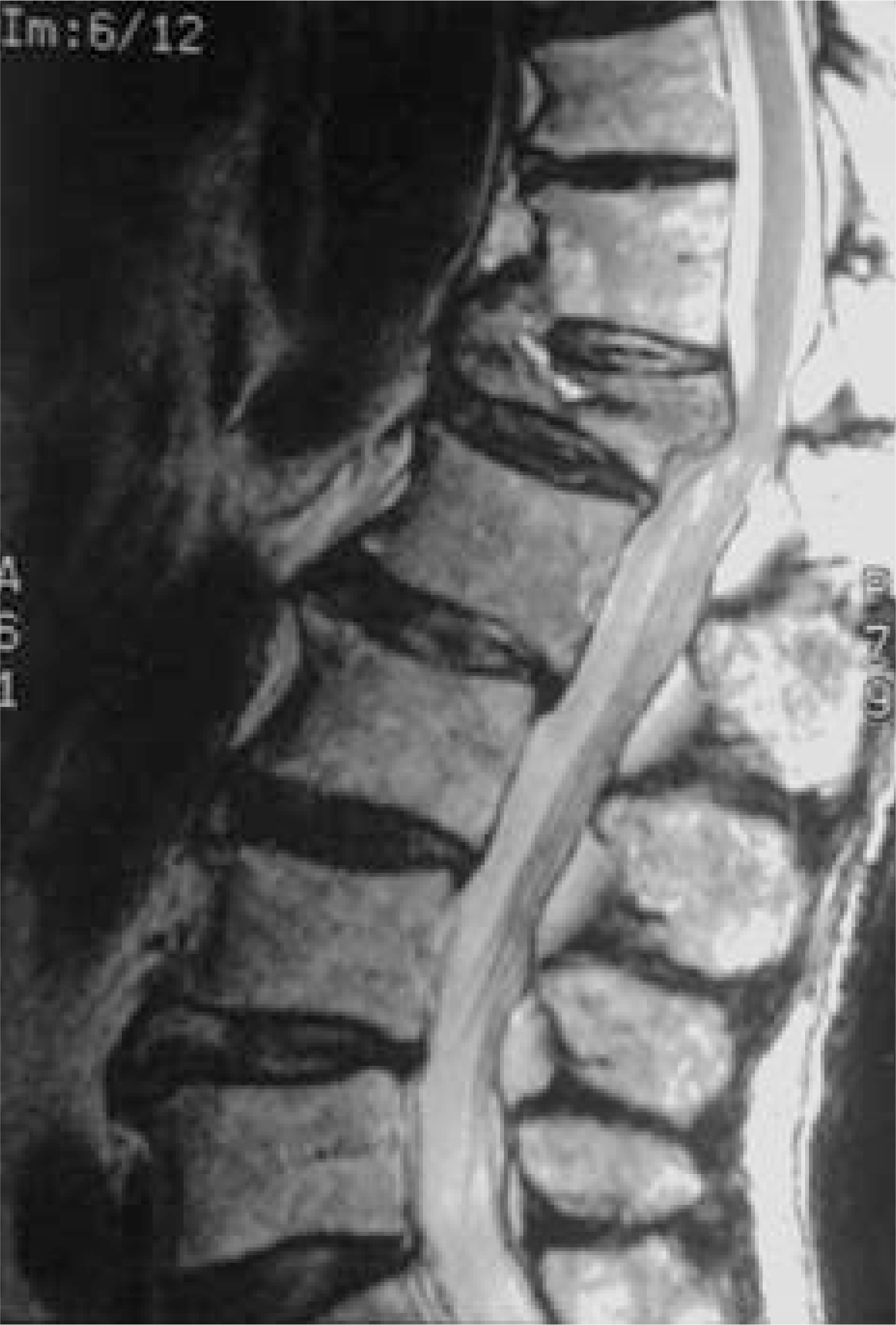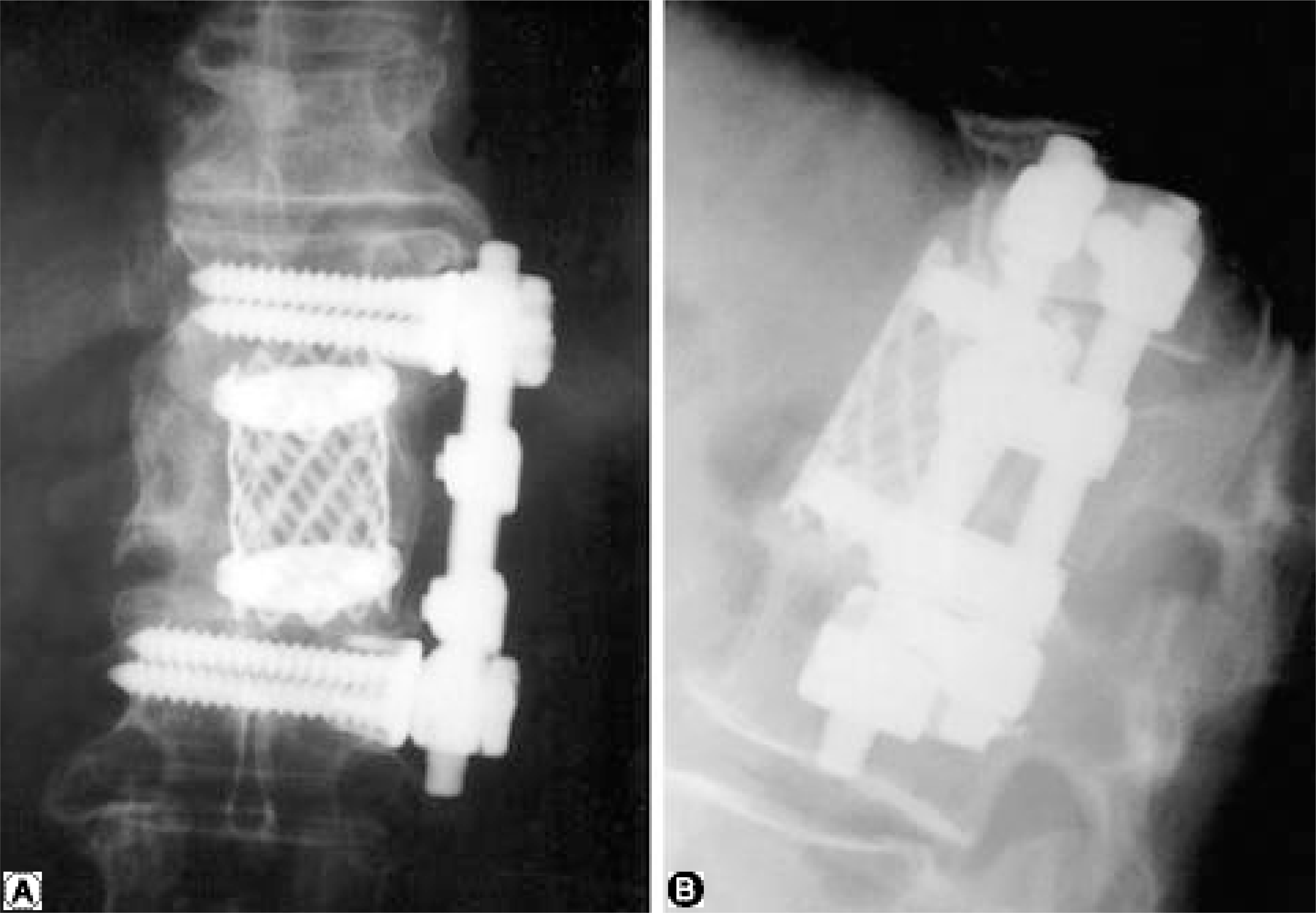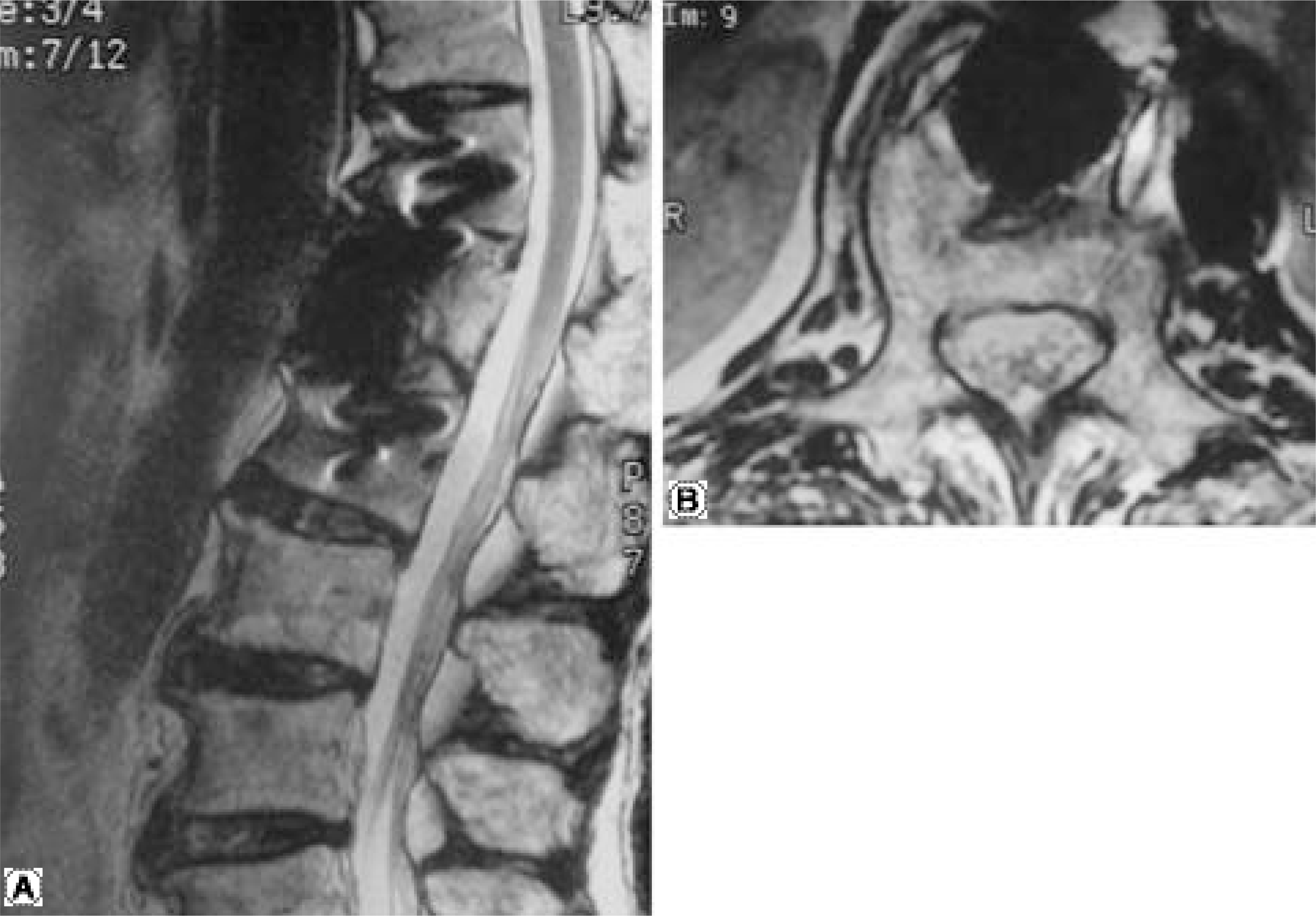Abstract
Objectives
To evaluate the clinical and radiological results of treatment for thoracolumbar spine fractures, with neurological deficits, using an anterior approach in a senile osteoporotic spine.
Summary of Background Data
With osteoporotic vertebral collapses, an operative treatment may be indicated for lesions that are considered unstable, especially if there is spinal canal compromise with neurological deficits. A s for the treatment of these cases, a posterior approach destabilizes, and increases, the kyphotic deformity, resulting in the need for a longer fusion period. A combined anterior- posterior approach increases the morbidity. A one stage anterior decompression and anterior reconstructive stabilization is often the most reasonable operative choice.
Materials and Methods
Between January 1999 and A ugust 2001, 12 cases of thoracolumbar osteoporotic vertebral collapse, with neurological deficits, were performed. There were 10 female and 2 male cases. The mean age for the patient was 69.3 years, ranging from 60 to 79 years. The numbers of each level of fractured vertebrae were; 2, 5, 4 and 1, in eleventh thoracic, twelfth thoracic, first lumbar and second lumbar vertebrae, respectively. A ll patients reported minor injury or trauma, and the average interval between injury and operation was 8.3 months, ranging from 1 to 36 months. There were 4 and 8 cases of neurological deficits in the Frankel D2 and D3 groups, respectively. The average preoperative local kyphotic angle was 23.8°, ranging from 5 to 35°, with a 66% loss in height, ranging from 42 to 83%). The average T score from the Bone Densitometry was - 3.7 S.D, ranging from - 3.2 to - 4.4.
The operations were performed by an extrapleural- retroperitoneal approach. The anterior instrumentation was performed with the Kaneda system and a titanium mesh cage. A ll cases were followed for more than 12 months.
Results
A ll cases had a solid bony fusion. The immediate postoperative average local kyphotic angle was 10.3°, ranging from -14 to 22°, and the correction loss at the last follow- up was 2.6°, ranging from 0 to 9°. A ll 12 patients with incomplete preoperative neurological deficits improved, postoperatively, to Frankel group E.
Conclusions
The one stage anterior spinal decompression and reconstruction, with a Kaneda instrument and a titanium mesh cage, afforded enough stability in patient with an osteoporotic vertebral collapse to enable early ambulation and to achieve realignment and solid fusion, and seems to have merit in the neurological recovery following an operation.
Go to : 
REFERENCES
1). Arciero RA., Leung KYK., Pierce JH. Spontaneous unstable burst fracture of the thoracolumbar spine in osteoporosis: A report of two cases. Spine,. 14:114–117. 1989.
2). Bradford DS., McBride GG. Surgical Management of thoracolumbar spine fractures with incomplete neuro -logic deficits. Clin Orthop,. 218:201–216. 1987.
3). Cho JL., Park YS., Kim DH. Operative treatment of burst fracture in thoraco- lumbar and lumbar spine using Kaneda instrument. J Korean Spine Surg,. 4:81–89. 1997.
4). Gurr KR., McAfee PC., Shih CM. Biomechanical analysis of anterior and posterior instrumentation system after corpectomy. J Bone Joint Surg,. 70A:1182–1192. 1988.
5). Kaneda K., Abumi K., Fujiya M. Burst fractures with neurologic deficits of the thoracolumbar spine. Results of anterior decompression and stabilization with anterior instrumentation. Spine,. 9:788–795. 1984.
6). Kaneda K., Asano S., Hashimoto T., Satoh S., Fujiya M. The treatment of osteoporotic-posttraumatic vertebral collapse using the Kaneda device and a bioactive ceramic vertebral prosthesis. Spine,. 17:S295–303. 1992.

7). Kaplan PA., Orton DF., Asleson RJ. Ost eoporosis with vertebral compression fractures, retropulsed fragments, and neurologic compromise. Radiology,. 165:533–535. 1987.
9). Kim M., Nolan P., Finkelstein JA. Evaluation of 11th rib extrapleural- retroperitoneal approach to the thora -columbar junction. Technical note. J Neuro- surg,. 93:S168–174. 2000.
10). Kostuik JP. Anterior fixation for burst fractures of the thoracic and lumbar spine with or without neurological involvement. Spine,. 13:286–293. 1988.

11). Kostuik JP., Matsusaki H. Anterior stabilization, instrumentation, and decompression for post-traumatic kyphosis. Spine,. 14:379–386. 1989.

12). Riew KD., Rhee JM. The use of titanium mesh cages in the cervical spine. Clin Orthop,. 394:47–54. 2002.

13). Salomon C., Chopin D., Benoist M. Spinal cord com -pression; An exceptional complication of spinal osteo -porosis. Spine,. 13:222–224. 1988.
14). Shikata J., Yamamuro T., Iida H., Shimizu K., Yoshikawa J. Surgical treatment for paraplegia resulting from vertebral fractures in senile osteoporosis. Spine,. 15:485–489. 1990.

15). Sung YB., Kim JH., Kim BJ. Treatment of unstable fracture and fracture-dislocation of the thoracolumbar spine using Kaneda instrument. J Korean Orthop Assoc,. 28:110–122. 1993.
16). Yamamuro T., Shikata J., Okumura H. Replacement of the lumbar vertebra of sheep with ceramic prosthesis. J Bone Joint Surg,. 72B:889–893. 1990.
17). Zdeblick TA., Shirado O., McAfee PC., DeGroot H., Warden KE. Anterior spinal fixation after lumbar cor -pectomy. J Bone Joint Surg,. 73A:527–534. 1991.
Go to : 




 PDF
PDF ePub
ePub Citation
Citation Print
Print






 XML Download
XML Download